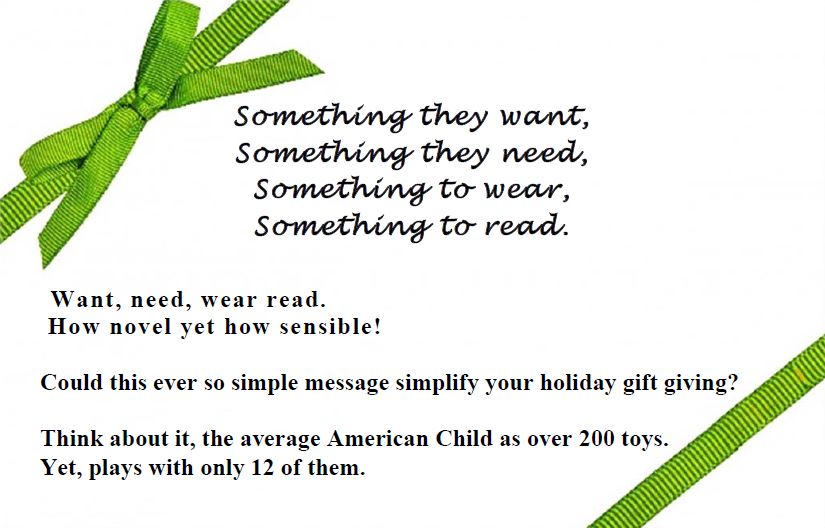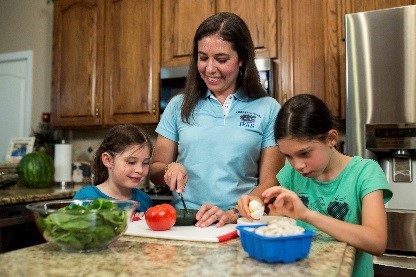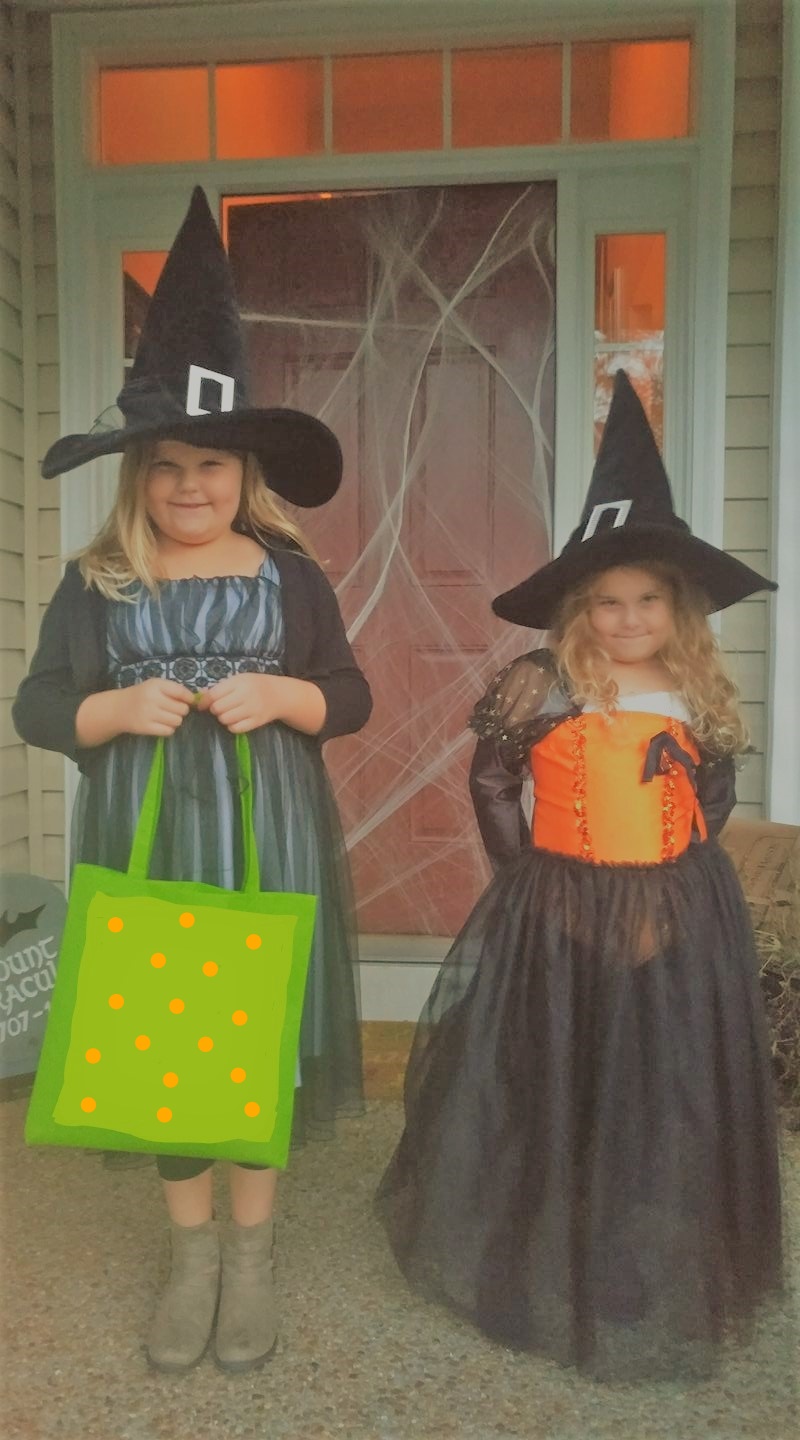by Heidi Copeland | Dec 2, 2017
 Recently, in what I thought would be a quick Saturday errand, I got stuck in traffic. It took me a moment to realize that the holidays are upon us.
Recently, in what I thought would be a quick Saturday errand, I got stuck in traffic. It took me a moment to realize that the holidays are upon us.
According to the National Retail Federation (NRF®), from Thanksgiving Day through Cyber Monday, more than 174 million Americans shopped in stores and online during the five-day holiday weekend, beating the 164 million estimated shoppers from an earlier survey. In fact, shoppers spent $1 million a minute on Black Friday and about $6.6 billion in total on Cyber Monday. The NRF® also found that consumers, both young and old, were spending more than last year, with both groups using the internet to browse for the best deals.
While it appears many consumers can spend unrestrained during the holidays, a lot of consumers find the holiday season stressful. Holidays require a lot of planning, and of course time and money.
A sensible way to approach the holiday season is to decide up-front what best fits the path you want to take. Come up with a plan, make a list (check it twice), and then stick to it. You will be amazed at how this simple list trick can relax you and make your holidays more enjoyable and less stressful.
The American Financial Services Association Education Foundation has some useful ideas for using a holiday spending plan. First, create a holiday budget that is feasible for you, and be sure to include all the incidentals from decorations to wrapping materials. Next, prepare your list(s), then do your homework. There is a lot of competition for the consumer’s money, and searching the web not only for information but also for the best deals can help you stick to your budget and save some money (Example: some stores honor other store’s pricing).
Other ideas to help stay within your budget this holiday include:
- Draw names with set limits on gift giving (Example: Aunt Marge – $15.00)
- Make a gift (Example: Cranberry muffins)
- Provide a service (Example: tackle a chore for a friend, neighbor, or loved one)
- Switch to giving gifts of experience (Example: tickets to an event) The gift of experience can be both practical and educational, and moreover, memories are worth more than stuff!
Try not to get bogged down by holiday spending this holiday season. I encourage you to create a plan, write up a list (check it twice) and stick to it. You will be glad you did!
The University of Florida Extension/IFAS – Leon County is an Equal Employment Opportunity Affirmative Action Institution.
by Angela Hinkle | Nov 20, 2017

Dine In Day, December 3rd, is a day to set aside and share a nutritious meal with family, friends, and colleagues and have good conversation. Dining In at home together really does make a difference in the lives of our families – biological or otherwise. Sharing a meal is so fundamental to the human experience that sometimes we take this simple task for granted. Dining In at home together decreases our families’ chance of being overweight or obese. It improves our families’ relationships. We save money and eat healthier when Dining In.
Not enough time, busy schedules, and too much stress, however, might make this seemingly impossible for many families.
So here are some tips that might make Dining In a little easier for you and your family from AAFCS (American Association of Family & Consumer Sciences).
- Make family meals a priority and agree upon a schedule.
- Try to have regular family meals two to three times per week.
- If dinnertime doesn’t work, have family breakfasts or snacks.
- Keep meals simple. Slow cookers save time in the evening!
- Double recipes and freeze food for a second meal.
- Set aside 30 minutes on the weekend for meal planning.
- Make family meals fun and include children in food preparation. How about having breakfast for dinner?
- Discuss neutral or positive topics at the table. Stumped for what to talk about? Try this conversation starter: “What fun thing did you do today?”
- Eliminate distractions like TV and cell phones.
- Eat slowly and enjoy your time as a family!

Dine In with Family
To help you make the pledge to Dine In with your family December 3rd, go to http://www.aafcs.org/fcsday/commit-to-dining-in/fcs-day-sign-up and make your very easy commitment today. After that, see how many more Dine In days you can make with your family.
To learn more about the Benefits of Family Meals, read http://edis.ifas.ufl.edu/pdffiles/FY/FY136200.pdf

by Melanie Taylor | Oct 16, 2017

Make Halloween a fun and safe night for children and adults alike.
From candy to pumpkins to the costumes, Halloween is a fun-filled time for kids and adults alike. However, it can pose dangers. To help make this year’s trick-or-treat a safe and fun time, follow these simple safety tips compiled by the American Academy of Pediatrics.
CREATIVE COSTUMES:
Plan costumes that are bright and reflective. Make sure shoes fit well and costumes are short enough to prevent tripping, entanglement, or contact with flames.
Consider adding reflective tape or striping to costumes and trick-or-treat bags for greater visibility.
Because masks can limit or block eyesight, consider non-toxic makeup and decorative hats as safer alternatives. Hats should fit properly to prevent them from sliding over eyes. The makeup should be tested on a small patch of skin ahead of time to ensure there are no unpleasant allergies on the big night.
When shopping for costumes, wigs, and accessories, look for and purchase those with a label clearly indicating they are “flame resistant.”
If a sword, cane, or stick is a part of your child’s costume, make sure it is not sharp or long. A child may be easily hurt by the accessories if he/she stumbles or trips.
Do not use decorative contact lenses without an eye examination and a prescription from an eye care professional. While the packaging on decorative lenses will often make claims such as “one size fits all,” or “no need to see an eye specialist,” obtaining decorative contact lenses without a prescription is both dangerous and illegal. This can cause pain, inflammation, and serious eye disorders and infections, which may lead to permanent vision loss.
Review with children how to call 911 if they ever have an emergency or become lost.
PUMPKIN CARVING TIME:
Small children should never carve pumpkins. Children can draw a face with markers. Then adults can do the cutting.
Consider using a flashlight or glow stick instead of a candle to light your pumpkin. If you do use a candle, a votive candle is safest.
Candlelit pumpkins should be placed on a sturdy table, away from curtains and other flammable objects, and not on a porch or any path where visitors may pass close by. They should never be left unattended.
HOME SAFETY:
To keep homes safe for visiting trick-or-treaters, parents should remove from the porch and front yard anything a child could trip over such as garden hoses, toys, bikes, and lawn decorations.
Adults should check outdoor lights and replace burned-out bulbs.
Wet leaves and debris should be swept from sidewalks and steps.
Restrain pets so they do not jump on or bite a trick-or-treater.
TRICK-OR-TREAT TIME:
A responsible adult should always accompany young children during their neighborhood trick-or-treating.
Obtain flashlights with fresh batteries for all children and adults.
If your older children are going alone, plan and review the route that is acceptable to you. Agree on a specific time when they should return home.
Only go to homes with a porch light on and never enter a home or car for a treat.
Because pedestrian injuries are the most common injuries to children on Halloween, remind Trick-or-Treaters to:
- Stay in a group and communicate where they will be going.
- Remember reflective tape for costumes and trick-or-treat bags.
- Carry a cellphone for quick communication.
- Remain on well-lit streets and always use the sidewalk.
- If no sidewalk is available, walk at the far edge of the roadway facing traffic.
- Never cut across yards or use alleys.
- Only cross the street as a group in established crosswalks (as recognized by local custom). Never cross between parked cars or out of driveways.
- Do not assume the right of way. Motorists may have a hard time seeing Trick-or-Treaters.
- Just because one car stops does not mean others will!
- Law enforcement authorities should be notified immediately of any suspicious or unlawful activity.
HEALTHY HALLOWEEN TIPS:
A good, healthy dinner prior to parties and trick-or-treating will discourage children from filling up on Halloween treats.
Consider purchasing non-food treats for those who visit your home, such as coloring books, stickers, or pens and pencils.
Wait until children are home to sort and check treats. Though tampering is rare, a responsible adult should closely examine all treats and throw away any spoiled, unwrapped or suspicious items.
Try to ration treats for the days and weeks following Halloween to prevent overindulging, which will lead to a stomachache and ruin the night’s fun.
Make sure the Halloween night is fun and safe with the suggested tips above. These tips will help guarantee you all a ghoulishly good time.
Source: American Academy of Pediatrics
by Marie Arick | May 27, 2017

photo credit Flickr
Though the celebration has been connected to many different religions and dates, Father’s Day has been celebrated since the Middle Ages. The Father’s Day holiday became a national holiday in 1972 thanks to President Nixon and is officially celebrated on the third Sunday of June. No matter the date celebrated, the purpose of honoring our father is unchanged. Many of us have lost our father, but some of us have been fortunate enough to have another male figure present in our lives that continues to represent this to us.
In today’s world, celebrating our ‘Father,’ the parenting he has provided, and the contributions that have helped shape our lives, is truly important. Each father’s or father figure’s impact is different and influences the recipient in their own special way. Can you reminisce right now and think of one important thing this influential person has said to you that has influenced you to this day? I can! My father simply stated this once during a conversation: “things don’t bother me, people bother me.” It struck me as so profound and simply true. I have remembered that statement to this day and repeated it many times to so many others. Were there other words of wisdom he shared with my brothers and me? Yes, and it seems so strange that we all remember different profound things.
Use this day to express your love and gratitude. Reflection and sharing are the best way you can honor someone. If they are no longer with you, celebrate them by sharing a fond memory or profound moment with others.
Sure, keep the tradition of gifting a tie if you like, but add a note of appreciation describing an influential moment or memory you carry. The beauty of sharing an influential life changing moment is priceless.

by juliannes | Mar 1, 2017
 We hope everyone had a wonderful Valentine’s Day last month and you had the opportunity to show a loved one that you care. But what about after Valentine’s Day?
We hope everyone had a wonderful Valentine’s Day last month and you had the opportunity to show a loved one that you care. But what about after Valentine’s Day?
Healthy communication is one way you can show loved ones, like your significant other, that you respect and value them on a daily basis.
According to the National Resource Center for Healthy Marriage and Families, healthy communication builds trust and friendship within your relationship. Healthy and effective communication also helps set realistic expectations. Unrealistic, unexpressed, and unfulfilled expectations are often the greatest source of unhappiness in a relationship.
So what makes communication healthy?
Dr. Victor Harris, UF Family and Youth Development Specialist, and Dr. Charlotte Olsen, Kansas State University Family Systems Specialist, have a few tips for healthy communication.
- Be clear, concise, and straight forward. If others can’t depend on you to tell them the truth, it damages trust in the relationship. If you think you will have trouble talking about a difficult topic with your partner, consider trying to write it down first to help figure out the best way to say things.
- Just the right amount of information. Think about the age and emotional state of the person you’re sharing with and share what they can process without being overwhelmed.
- Timing is everything. Be sensitive about when or when not to have certain conversations. If someone is sad, angry, tired, or stressed, that might not be the best time to talk about a sensitive subject. Set a time and place to discuss and opt for a “soft start,” using “I” rather than “You” messages that suggest blame.
- Listen silently. Listen silently without interrupting, but show through eye contact, head nodding, and facial expressions that you are listening. Allow the other person to finish what he or she is saying without jumping in — or jumping to a conclusion.
- Listen to find common ground. Try to look for points of agreement, rather than disagreement.
- Focus on positive interaction. It typically takes five positives to overcome one negative.
- Listen reflectively. Try paraphrasing what you have heard. This not only lets your partner know you’re listening, but it can help clarify misunderstandings. Consider your response before speaking, rather than blurting out the first thing that comes to mind.
- Be aware of non-verbals. Non-verbals can carry more weight than words. Looking away when a spouse or partner is talking to you or walking out of a room in the middle of a conversation are examples.
- Be willing to compromise. If personal spending from a joint account is becoming an issue, develop a budget in which each spouse or partner has a personal allowance that is his or her money to save or spend as he or she wishes.
- Be respectful — and appreciative. If both parties are tired, say “thank you” to the one who volunteers to go to the grocery store, fix a meal, or make life easier to ease the stress.
- Make “No Needling” the rule — not doing anything intentionally to irritate the other person. Be aware that sarcasm and putdowns can erode a relationship. Humor can break the ice, but it’s best to make fun of yourself, rather than another.
- Be spontaneous, particularly in making everyday opportunities enjoyable — and fun.
For more information on healthy relationships whether you’re dating, married, engaged, or even divorced, check out http://smartcouples.ifas.ufl.edu/.
 Recently, in what I thought would be a quick Saturday errand, I got stuck in traffic. It took me a moment to realize that the holidays are upon us.
Recently, in what I thought would be a quick Saturday errand, I got stuck in traffic. It took me a moment to realize that the holidays are upon us.






